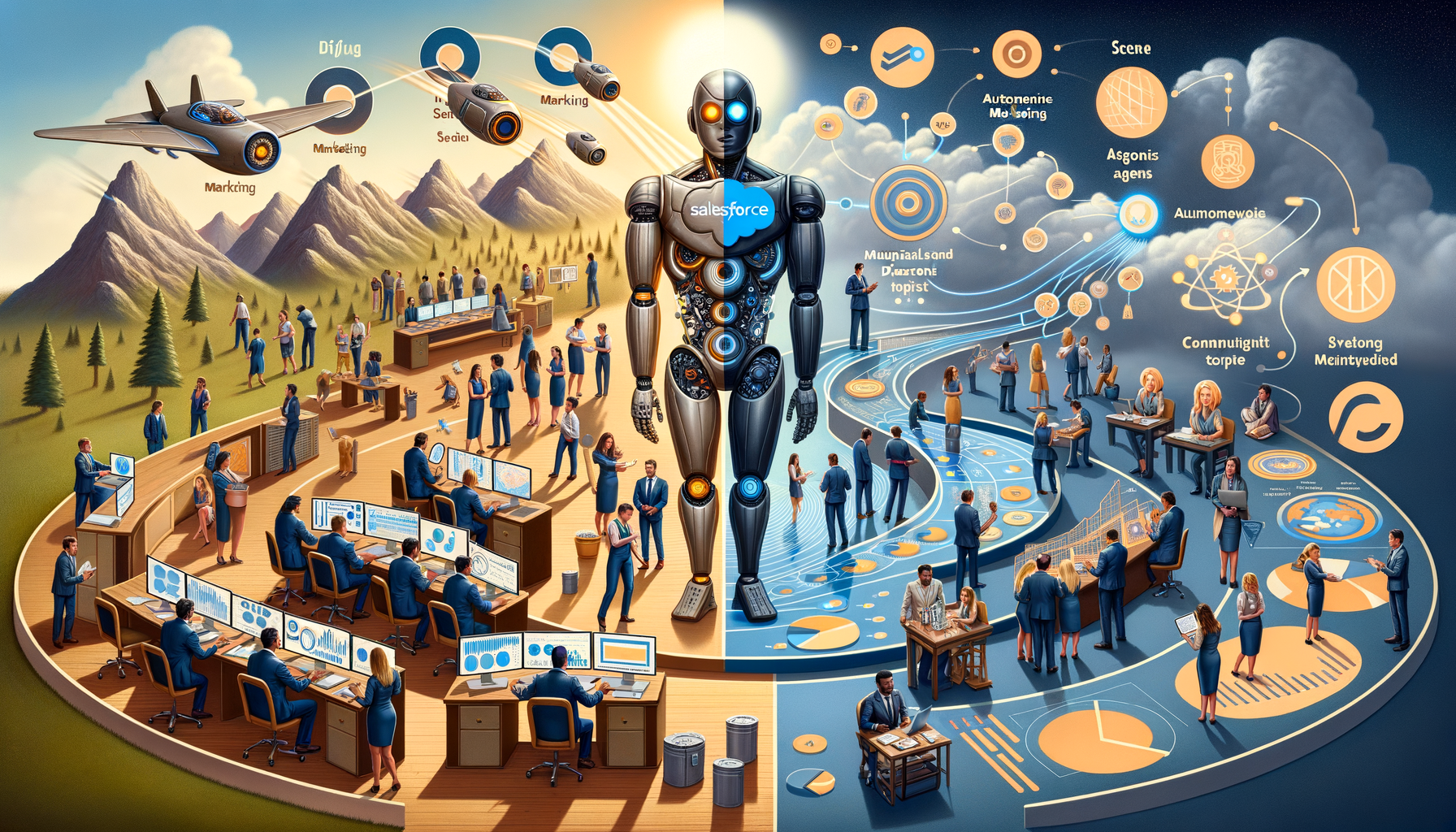Introduction
In the increasingly competitive landscape of marketing, AI is not just a buzzword but a transformative force reshaping how businesses engage with customers. Autonomous AI agents, such as Salesforce’s Agentforce, push the boundaries of traditional marketing by enabling organizations to operate with enhanced efficiency and customer-centricity.
Key Insights
Here are critical takeaways from the exploration of autonomous agents and how they can be implemented effectively in marketing strategies:
- What are Autonomous Agents? Autonomous agents are sophisticated AI systems capable of comprehending and reacting to inquiries independently, making them suitable for diverse marketing tasks including customer support and campaign management.
- Functionality of Autonomous Agents: Utilizing machine learning, these agents gather and analyze data from multiple sources, steadily improving their performance through continuous learning.
- Features of Agentforce: The integrated platform combines AI, customer relationship management (CRM), and automation, ensuring access to real-time customer insights. Key features include:
- Scalability to manage growing actions without losing performance
- Customization capabilities through tools like Prompt Builder
- Robust security measures ensuring data protection and compliance
- Real-World Applications: These agents can enhance customer service by addressing inquiries efficiently, as well as revolutionize marketing efforts by analyzing performance metrics, generating insights, and overseeing full-cycle marketing campaigns.
- Implementation Best Practices: A judicious approach towards deploying these agents is crucial. Steps include:
- Defining clear goals and objectives
- Designing the agent according to specifications
- Thorough testing before launch
- Continuous monitoring and optimization post-deployment
- Innovative Edge: The new Agentforce Atlas Reasoning Engine enables autonomous data analysis, decision-making, and efficient task completion, all backed by low-code tools to simplify deployment.
- Integration: Seamless integration with Salesforce’s existing capabilities, such as MuleSoft, allows businesses to leverage prior workflows, enhancing functionality and operational efficiency.
- Customer Success Stories: Leading brands like OpenTable and Saks have successfully adopted Agentforce, citing improved app integration and enhanced capacity to meet customer needs.
Implementation
The practical application of autonomous agents in marketing can be broken down into strategic steps:
- Research and Identify Use Cases: Analyze your organization’s needs and determine where autonomous agents can provide the most value—be it in customer interaction, campaign management, or data analysis.
- Leverage Technology: Implement tools such as Azure OpenAI or Salesforce’s Agentforce to build your autonomous agents. Use low-code features to expedite the deployment process, allowing marketing teams without deep technical skills to contribute.
- Monitor and Optimize: Post-deployment, utilize analytics to track the agent’s performance against KPIs. Regularly update and optimize the agent based on feedback and evolving business objectives.
Conclusion
The integration of AI through autonomous agents like Salesforce’s Agentforce is not merely a technological upgrade; it represents a strategic shift towards innovation in marketing. By empowering organizations to automate processes and enhance customer interactions, these tools are pivotal in driving growth. Marketing professionals are encouraged to embrace these innovations to remain competitive, efficient, and responsive to ever-changing market dynamics.

